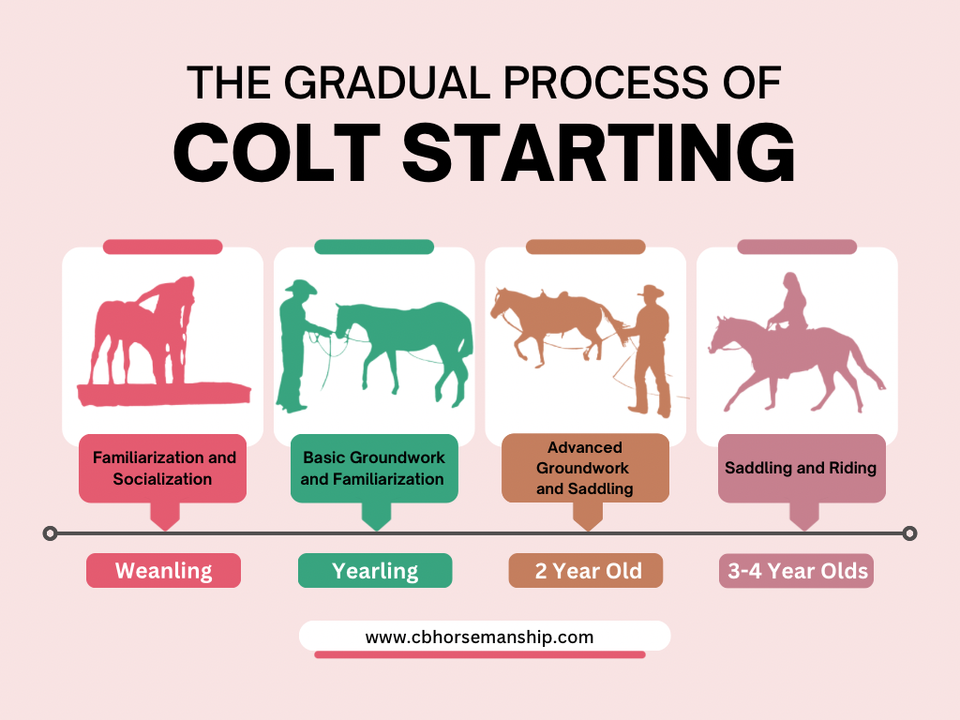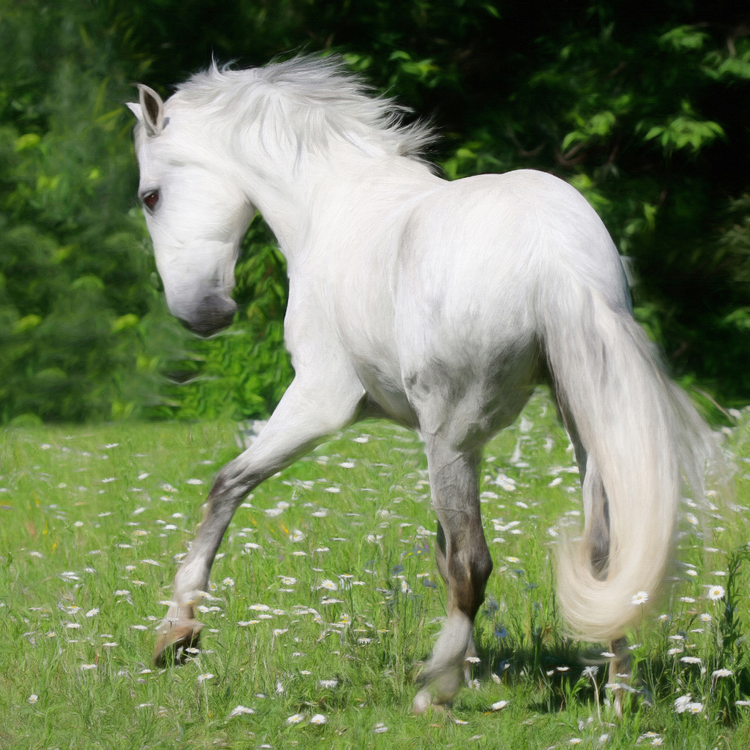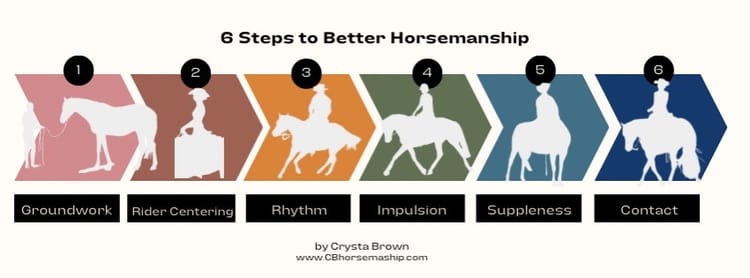Setting Our Young Horses Up For Success

There are many terms to describe beginning a horse’s career under saddle; breaking, backing, saddle breaking, and colt starting, are just a few. Colt starting was popularized as a replacement term for phrases that may suggest violence or breaking a horse’s spirit. As a California girl with a background in Paint and Quarter horses, I’ve had the unique opportunity to compare my experiences with young horses at home to the colt starting techniques I have encountered in Ireland.
In the US it would be very normal to start our horses between 2 and 3 depending on the horse’s growth. I was very interested that there seems to be consensus amongst local Irish equestrians that horses should be started later at 3 or 4. Giving a horse more time to grow seems perfectly reasonable to me. Where I may think differently is when I encounter horse owners who would turn their horse out until it’s 3 or 4, and then send it to a colt starter for 30 days and consider the horse “saddle broke”.
Within the first handful of horses I worked with when arriving in Northern Ireland, I encountered a yearling Irish Sporthorse and a couple of late started warmbloods and Irish Sporthorses. The owners were so proud that their horses had been given so much freedom in early life but they were willing to let me start some work with their yearling to see how it went. It was a great opportunity for me to experiment with these new breeds and test out my theories on working with a young horses long before saddling. I spent the next few months switching between doing a bit with this yearling then turning her back out and I have been so pleased to see how easy it all comes to her. She was no drama when I went to saddle and bridle, she didn’t bat an eyelash at me crawling on her back, and now runs to me when she sees me coming to the pasture gate. On the other hand, the late-started horses were a much more challenging process in becoming safe to handle. They knew they were big, and were happy to throw their weight around to avoid hard work.
It would be very common at the APHA and AQHA shows to show your horse in yearling in-hand trail and yearling longe-line. Now it varies greatly between owners how extensively that baby will show, but I don't think I fully appreciated how beneficial this experience is to the yearlings until I worked with so many unhandled horses. In fact, I think building your young horse's confidence and introducing him to his future in developmentally appropriate ways is such an asset when it comes to bringing them along as a riding horse. Now, I'm not suggesting that every horse needs to be a champion in these classes to be successful in his later career, but I love that these classes encourage horse owners to expose their young horses to some training and a show environment.
"I don't think I fully appreciated how beneficial this experience is to the yearlings until I worked with so many unhandled horses."
I once heard a trainer mention that it’s kind of mean to tell a horse that from 1 to 4 years old his life is going to be running around with his buddies, doing as he pleases, and then on one random Tuesday, we try to convince him that he needs a work ethic and must follow all sorts of rules that make a lot of sense to people, but very little sense to untouched horses. Then on top of that, we’re going to strap a bunch of cowhide on his back and around his belly, AND THEN we need to jump on their back, just exactly as a predator would, and the horse should just be okay with it. Talk about setting a horse up for failure. No wonder so many horses take off bucking or explode!
While it’s a bit of a silly exaggeration, this was a beautiful illustration for me of what we often expect of horses. Now compare a horse being ridden to a child in grade school writing sentences. Before we write sentences, we must learn how to write simple words. Before that, we must learn our alphabet. Before that, we even need to learn how to hold the pencil. This is just like our young horses! We cannot try to write paragraphs, or civilly trot around with a saddle and rider until we can hold the pencil (or be groomed and haltered.)
With that being said, just like children, all horses have strengths and weaknesses and will learn at different paces. Some horses are just star students and will thrive even in less-than-ideal circumstances. Some horses may question the program or be hesitant to engage, it seems logical to create a training plan that makes success when riding the MOST likely situation instead of just lucky. There’s nothing wrong with hoping for the best, but for safety, I believe it’s important we prepare for the worst. At the very least, let’s plan to keep our horse or trainer out of a dangerous position.
"It seems logical to create a training plan that makes success when riding the MOST likely situation instead of just lucky."
For those with young horses at home, maybe one you bred yourself. I encourage you to build your colt’s confidence long before you decide to ride. I actually don’t mind if you wait till a horse is 4 or 5 to saddle and ride, but I'd like to suggest two choices to set your young horse up for confident and successful riding...
Either you leave your horse in training for a long period of time, (even 4-6 months) to allow the trainer and horse time to build trust, respect, and then add skills.
Or...
You train incrementally, sending him to the trainer for a couple of weeks as a weanling, letting him learn to pick his feet up, get hosed off, stand tied, halter, and lead. Then send him as a yearling for a month, start dialing in groundwork basics and improving on the skills introduced as a weanling. Then send him for a month or two as a 2 year old and build his ground work. Get him accustomed to wearing a saddle and bridle, and start long reining (or ground driving as we call it).
By building his work ethic, trust and confidence incrementally or slowly over a long period of time you’ll have a colt that will be set up for success when it comes time to actually ride!
Now some of you I’m sure are on a very tight budget, and maybe what makes the most sense is doing a lot of this work yourself. I think many folks are capable of bringing their young horses through groundwork, but I caution you not to underestimate your horse or overestimate yourself. There’s no shame in outsourcing to trainer when applicable. With that being said, there are tons and tons of great resources online for cheap and free all about working with foals and young horses. I’d suggest you find a program you like and be as consistent as possible. Sometimes jumping around between many training philosophies can be more confusing than it is helpful.
We all want the best for our horses and I find so much commonality with the horse-men & women I have encountered in just wanting to do right by our animals. I’ve seen many horses that have spent their time as a foal being handled and slowly introduced to new ideas -even hauling to a show or two, whether they compete or not- go on to be so easy and fun to ride and show, all because of their preparation. I love when I go to ride and the horse just thinks “oh well, of course!” because saddling and riding isn't a surprise to them at that point.
I have seen firsthand that this mindset benefits many horses of all different breeds and disciplines, while still allowing your horse time to grow and freedom to learn from the herd.




